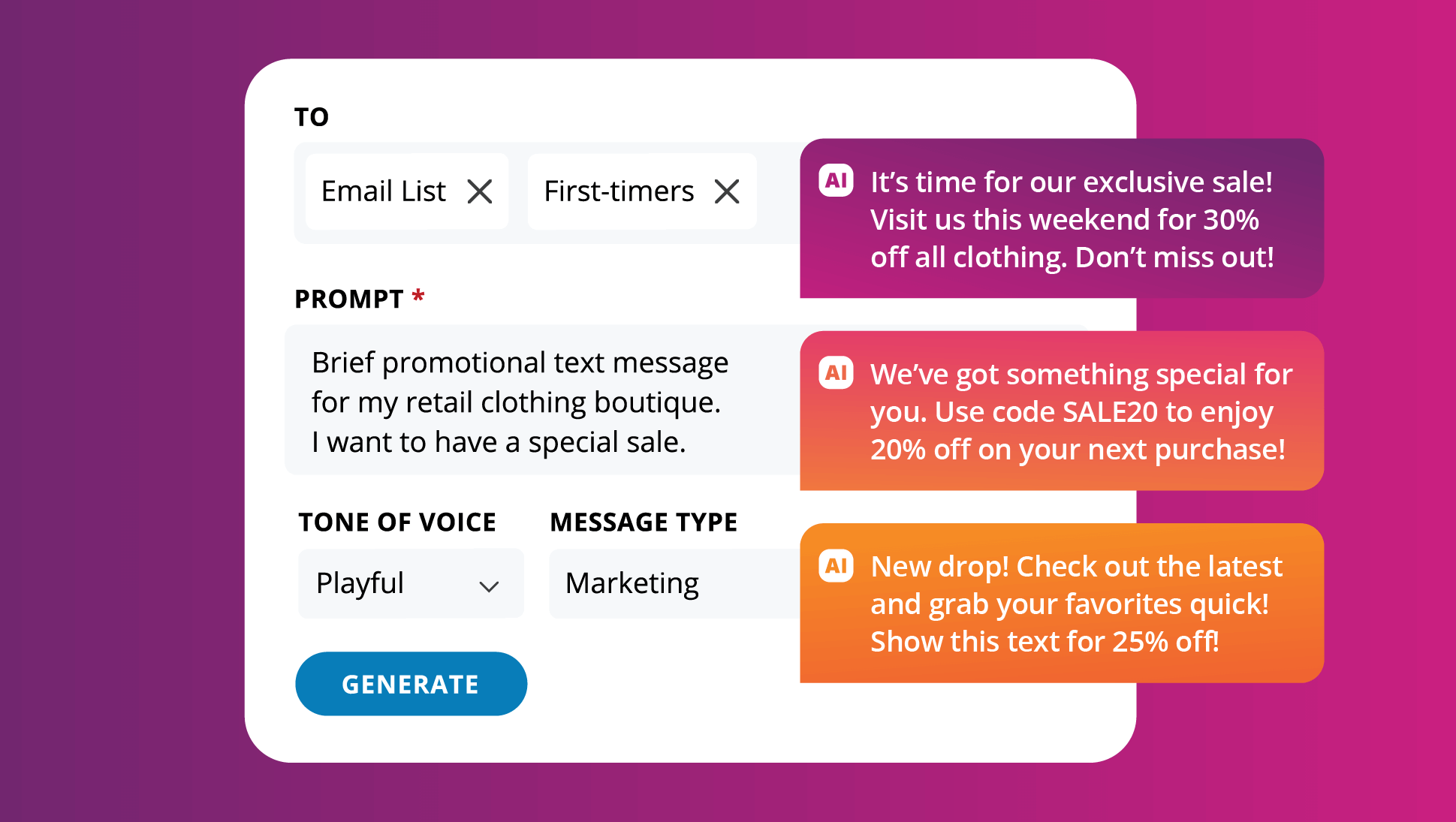In the fast-paced world of marketing, businesses are constantly looking for innovative ways to maximize their return on investment (ROI). One such strategy that has been gaining popularity is the use of voicemail drops. A voicemail drop is a pre-recorded message left in a recipient’s voicemail inbox without the phone ringing. This method is highly effective for businesses looking to reach a large audience quickly and efficiently while maintaining a personalized touch. If used correctly, voicemail drops can significantly enhance your marketing efforts, providing a high ROI with minimal investment.
What Are Voicemail Drops?
Voicemail drops, also known as ringless voicemail, are a form of direct marketing that allows businesses to send pre-recorded voice messages directly to a customer’s voicemail inbox. Unlike traditional cold calling, voicemail drops don’t ring the recipient’s phone, avoiding interruptions and providing a more subtle approach to marketing. The messages are typically short and to the point, encouraging the recipient to take action or learn more about a product or service.
This marketing tool is commonly used in a variety of industries, including real estate, retail, finance, and telecommunications, but any business looking to streamline its outreach process and improve customer engagement can benefit from incorporating voicemail drops into its marketing strategy.
Why Voicemail Drops are an Effective Marketing Tool
- Higher Engagement Rates: Voicemail drops allow businesses to deliver a message directly to the recipient without causing interruption. Since the message is already waiting for the recipient in their voicemail inbox, they are more likely to listen to it compared to a cold call that might be ignored. This non-intrusive nature increases the chances of your message being listened to, especially when it’s tailored to your audience.
- Cost-Effective and Time-Saving: Traditional phone calls require agents to dial each number individually and engage in lengthy conversations. This can be time-consuming and costly, especially if the conversion rate is low. Voicemail drops, on the other hand, allow businesses to send thousands of messages at once, drastically reducing the time spent on each individual lead and improving overall marketing efficiency.
- Increased Conversion Potential: When done right, voicemail drops can prompt the recipient to take immediate action. Whether it’s signing up for a webinar, visiting a website, or calling for more information, voicemail drops can drive conversions without being overly aggressive. The personal touch of a voice message makes it feel less like a sales pitch and more like a conversation, which can encourage a positive response.

Tips for Maximizing ROI with Voicemail Drops
To get the most out of your voicemail drops and achieve a high ROI, there are several best practices to follow:
1. Personalize Your Message
While voicemail drops are an efficient way to reach large audiences, it’s important not to treat them like a generic broadcast. Personalization plays a key role in increasing engagement. Address the recipient by name, reference their specific interests or needs, and customize the message to speak directly to them. Personalization makes the recipient feel valued, which can significantly improve the response rate.
Example: Instead of a generic “Hello, this is [Business Name],” try something more personal, like “Hi [Recipient’s Name], this is [Your Name] from [Business Name]. I have something exciting that I think you’ll love…”
2. Keep Your Message Short and Focused
Attention spans are short, especially in the digital age. Voicemail drops should be brief, clear, and to the point. Aim for 30-45 seconds in length—just enough time to convey the essential message without losing the listener’s attention. Include a strong call to action (CTA) and make sure your contact details are easy to find in the voicemail.
Example CTA: “Call us at [phone number] to schedule a consultation” or “Visit our website at [website URL] to learn more.”
3. Segment Your Audience
To make your voicemail drops more effective, segment your audience based on factors such as location, purchase history, or interest. Tailor your messaging to each segment to ensure it resonates with the specific needs of that group. For example, a special offer for existing customers should differ from one targeting potential leads.
Example: For existing customers, you might say, “We have a special promotion for our loyal customers this month,” while for new prospects, you could highlight “exclusive offers for first-time buyers.”
4. Test Your Messages
Testing is crucial to determining what works best for your audience. Try different approaches with A/B testing, such as varying the tone, length, or call to action, and analyze the results. This will help you refine your message and improve its effectiveness over time. You may also want to test different voicemail drop frequencies to find the optimal balance between over-saturation and effective reach.
5. Optimize Call-to-Action (CTA)
Your CTA is arguably the most important part of your voicemail drop. It’s the final step that drives action. Make sure your CTA is clear, concise, and action-oriented. Whether you want the recipient to call you, visit your website, or take advantage of a limited-time offer, your CTA should create a sense of urgency or offer an incentive to act quickly.
Example CTA: “This offer is only available for the next 24 hours, so act now!”
6. Monitor and Analyze Performance
Once you’ve launched your voicemail drops, track key performance metrics to evaluate their effectiveness. Metrics like response rate, conversion rate, and overall engagement can help you understand whether your campaign is delivering the desired results. Use this data to continuously refine and optimize your future campaigns.
Analytics Tools to Track:
- Response rate (how many recipients listened to the voicemail and followed through with the CTA)
- Conversion rate (how many took the desired action after listening)
- Return on investment (how much revenue was generated compared to the campaign cost)
Best Practices for Compliance and Avoiding Spam Issues
While voicemail drops offer significant marketing advantages, it’s important to ensure that your campaign complies with relevant telemarketing laws, such as the Telephone Consumer Protection Act (TCPA) in the United States. Non-compliance can lead to legal issues and damage your brand’s reputation. Here are some guidelines to help you stay compliant:
- Obtain consent: Always make sure you have the proper consent from recipients before sending voicemail drops.
- Avoid spammy tactics: Do not over-saturate your audience with too many messages. Space them out appropriately to avoid annoying your customers.
- Offer an opt-out option: Provide a way for recipients to opt out of receiving future messages, which helps with compliance and improves customer satisfaction.
Integrating Voicemail Drops with Other Marketing Channels
To maximize the impact of voicemail drops, it’s important to integrate them with other marketing strategies. By combining voicemail drops with email marketing, SMS campaigns, or social media outreach, you can create a multi-channel marketing approach that boosts engagement and reinforces your message across multiple touchpoints.
For example, follow up a voicemail drop with an email that contains additional information or a special offer. This creates a cohesive customer journey where the voicemail drop serves as an introductory message, and the email reinforces the call to action.
Tip: Use consistent branding and messaging across all channels to create a unified experience that strengthens brand recognition and improves conversion rates.

Leveraging Voicemail Drops for Customer Retention
While voicemail drops are often used for lead generation, they can also be a powerful tool for improving customer retention. Sending voicemail messages to existing customers with special offers, reminders, or updates about your products or services can help foster customer loyalty and keep your brand top of mind.
Consider sending periodic messages that include appreciation for their business, exclusive offers, or reminders about upcoming renewals. This adds a personal touch to your customer relationships and encourages repeat business.
Example: “Thank you for being a valued customer! We’ve got a special offer just for you – call us today to take advantage of this limited-time promotion!”
Avoiding Common Mistakes in Voicemail Drop Campaigns
Even though voicemail drops are highly effective, mistakes in their execution can lead to poor results. Here are a few common mistakes to avoid when running a voicemail drop campaign:
- Lack of Clarity in the Message: Ensure your voicemail message is clear and easy to understand. Avoid jargon and complicated language that might confuse recipients.
- Overusing Voicemail Drops: Bombarding customers with too many voicemail drops can lead to fatigue and frustration. Be strategic and send them at appropriate intervals to avoid annoyance.
- Ignoring Mobile Optimization: Many recipients will listen to voicemail drops on their mobile devices, so make sure your messages are optimized for smaller screens and easy-to-read formats (if including a URL or contact info).
- Not Testing Messages Before Launching: Always test your messages before sending them out to a wide audience. What works for one group of customers may not work for another, so ensure your message resonates with the target audience.
Scaling Your Voicemail Drop Campaigns
Once you’ve fine-tuned your voicemail drop strategy and have seen positive results, it’s time to scale up your campaign. The beauty of voicemail drops is that they are easily scalable – you can reach thousands of potential customers with minimal additional effort. Here are a few strategies to help scale your voicemail drop campaigns:
- Expand Your Audience: Start by increasing the reach of your voicemail drops to new target markets or customer segments. This could involve running a targeted campaign for a specific geographic region or a new product launch.
- Use Automation Tools: Invest in automation software that can send voicemail drops to large lists without manual intervention. These tools allow you to schedule messages in advance, track performance, and ensure that your messages are delivered at the optimal times.
- Optimize Frequency: Find the sweet spot in terms of how often you send messages. Too few messages might lead to low engagement, while too many might lead to disengagement. Test different frequencies to see what works best for your audience.
The Role of Analytics in Voicemail Drop Campaigns
Data and analytics play a crucial role in optimizing any marketing campaign, and voicemail drops are no exception. By analyzing key performance metrics, you can determine the effectiveness of your campaigns and identify areas for improvement.
Key Metrics to Track:
- Open Rate: How many people listened to your voicemail drop? This will give you an idea of how engaging your message is and whether it’s being delivered at the right time.
- Response Rate: How many recipients took action after listening to the voicemail? Whether it’s making a purchase, visiting your website, or calling you, this metric helps measure the success of your CTA.
- Conversion Rate: Of those who responded, how many converted into customers or leads? This final metric is essential for measuring the ROI of your voicemail drop campaign.
Using analytics, you can continually refine your messaging and approach to drive better results.

The Ethical Use of Voicemail Drops: Maintaining Trust and Transparency
While voicemail drops are an effective tool for marketing, it’s essential to use them ethically to maintain customer trust and avoid legal issues. Ethical marketing practices help ensure that your campaigns are not only successful but also respected by your audience.
- Obtain Consent: Before sending any voicemail drops, ensure that you have explicit consent from the recipients. This is not only good practice but often a legal requirement, depending on your region’s laws. In the U.S., for example, the Telephone Consumer Protection Act (TCPA) mandates that businesses have prior consent before sending any prerecorded messages. Always verify that your list is opt-in and that customers are aware they will receive such messages.
- Offer an Opt-Out Option: Make it easy for recipients to opt out of future voicemail messages. Including an opt-out mechanism such as replying with a specific code or visiting a website to unsubscribe can help ensure that you are compliant with regulations and prevent customer frustration.
- Be Transparent About Your Intent: Your voicemail drop should clearly communicate who is calling and the purpose of the message. Avoid misleading recipients or using deceptive tactics to get them to listen. This transparency builds trust and ensures that your audience knows exactly what to expect.
- Respect Privacy: Avoid sending voicemail drops that invade personal privacy or use information inappropriately. Be mindful of the content you’re sharing and ensure it is relevant and appropriate for the recipient.
By following ethical guidelines and prioritizing the recipient’s preferences, businesses can build stronger relationships with their audience and maintain a positive reputation.
Unlock the Power of Voicemail Drops for Maximum ROI
Voicemail drops are a powerful tool that, when used strategically, can significantly increase your marketing ROI. By personalizing your messages, segmenting your audience, and optimizing your CTAs, you can drive higher engagement and conversions without the intrusive nature of cold calling. Combine this with careful testing, monitoring, and compliance, and you’ll have a proven method for reaching your target audience effectively and efficiently. Start using voicemail drops today to boost your marketing strategy and achieve the results you’ve been aiming for!

